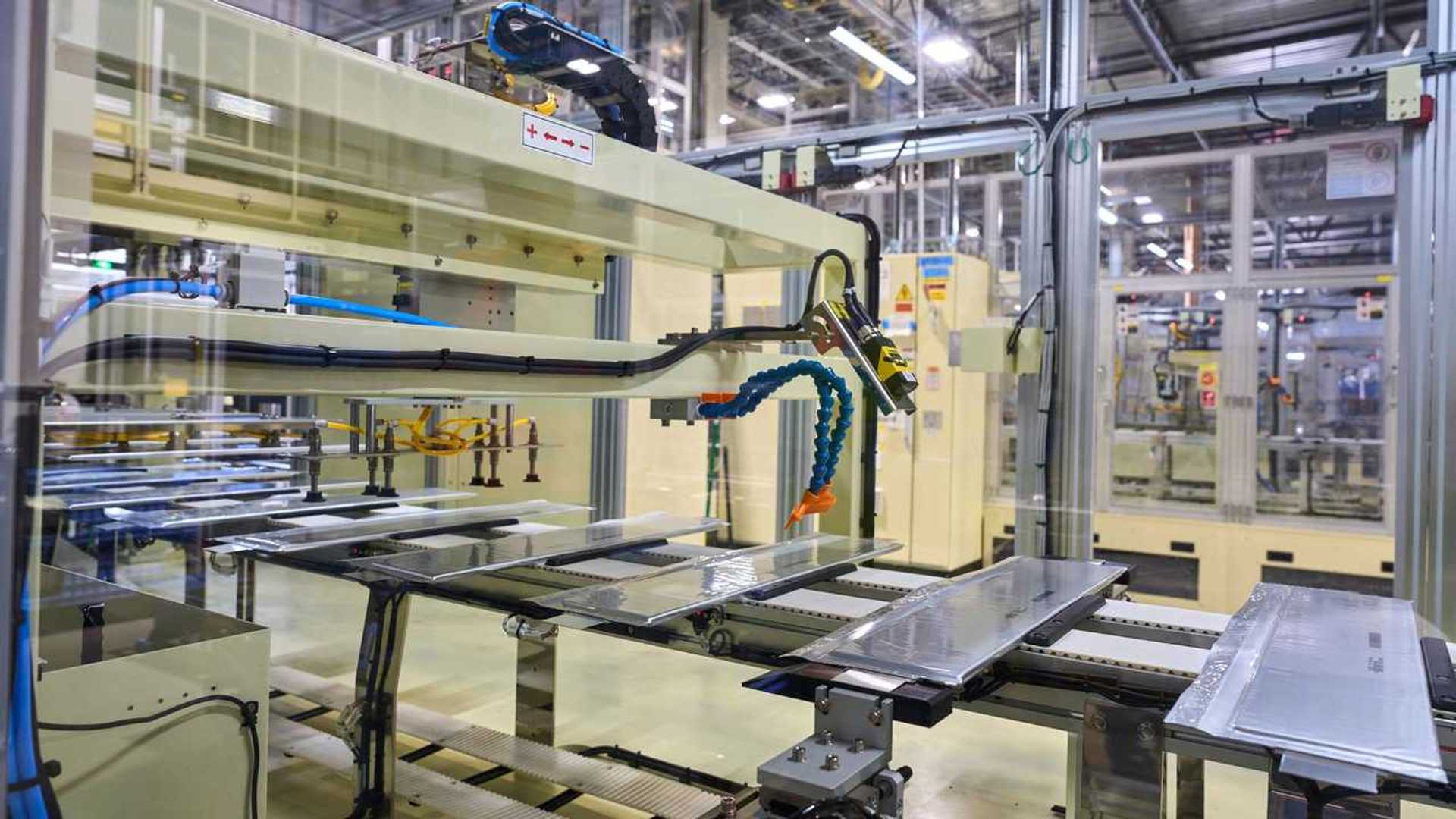GM and LG Energy Solution to Build Low-Cost EV Batteries in the U.S.
General Motors and LG Energy Solution are partnering to manufacture affordable lithium-iron phosphate (LFP) batteries in the United States. This move will involve converting a portion of GM’s Spring Hill, Tennessee, manufacturing plant to produce these batteries.
The next-generation Chevrolet Bolt EV and one trim level of the Silverado EV will use LFP batteries.
GM’s Electric Vehicle Plans are Seeing Success
General Motors’ electric vehicle strategy is already showing positive results. With a range of models across different vehicle types, the automaker is achieving sales records and challenging Tesla’s market share. Despite recent changes in government tax credits and a challenging regulatory environment for EVs, GM continues to move forward.
GM announced on Monday that it will upgrade its Spring Hill factory to make low-cost LFP batteries for its electric vehicles. The Spring Hill battery factory is owned by Ultium Cells, a joint venture between GM and LG Energy Solution. Ultium Cells is also a major battery supplier for several other car companies in the U.S., including Hyundai, Kia, Toyota, and Rivian.
Why Low-Cost LFP Batteries Are Important
Lower-cost LFP batteries are a key factor in making electric vehicles more affordable. The battery is typically the most expensive component of an EV, and reducing its cost can help lower the overall price of cars.
LFP Batteries: A New Generation of EV Cells
While LFP batteries were originally developed in the U.S. by the University of Texas at Austin, they have become widely adopted in China. Chinese battery companies like BYD and CATL have been leading the development and scaling of this technology. While Korean companies like LGES were slower to adopt LFP, they are now working to catch up.
The LFP battery chemistry is also gaining traction in the U.S. Ford plans to produce LFP cells at its BlueOval Battery Park in Michigan for future low-cost EVs. Tesla recently expanded its LFP production facility in Sparks, Nevada, for energy storage applications.
Currently, the joint venture between GM and LG Energy Solution is the largest producer of battery cells in North America, surpassing even Tesla. GM is also investing in newer battery chemistries, including lithium-manganese-rich (LMR) batteries for trucks and SUVs, expected to begin production in early 2028. Additionally, GM is researching silicon anodes and solid-state battery technologies.
The Spring Hill factory currently builds both GM’s gasoline-powered vehicles and electric vehicles. It also includes a battery assembly line and manufactures the Cadillac Lyriq, Vistiq, Honda Prologue, and the Acura ZDX.
Future Plans
The conversion of the battery assembly lines at Spring Hill is scheduled to begin by the end of the year, with production starting by the end of 2027. GM aims to achieve significant cost savings with LFP batteries compared to its current lithium-ion packs that use high-nickel chemistries.
The 2026 Chevrolet Bolt EUV Rendering Front shows the design of the upcoming affordable EV. The Bolt EUV is expected to be available later this year and reach customers in early 2026, about two years before the LFP battery production at Spring Hill begins. The LFP-powered Silverado EV is projected to offer around 350 miles of range and reduce costs by $6,000.

I’m Rohan Mehta, the voice behind KhelRe—a trusted and steadily growing blog dedicated to electric vehicles (EVs) in India. With over five years of experience as a tech and automotive blogger, I turned my frustrations with owning an EV into a mission: to help others make more intelligent choices in this fast-evolving world of electric mobility.
I’ve been an early adopter of EV technology—I repurchased my first electric scooter in 2019. That experience opened my eyes to both the promises and the pitfalls of this new mode of transport. From slow charging times and range anxiety to misleading specs and hidden costs, I’ve faced it all. But instead of walking away, I decided to write about it.
That’s how KhelRe was born—a no-nonsense, hands-on blog where I share practical, real-world reviews of EV cars, bikes, and scooters. I break down features, range, performance, and pricing from a user-first perspective. I take pride in simplifying complex tech into clear, valuable insights—offering tips, ownership stories, and advice you won’t find in flashy press releases or sales brochures.
Whether you’re a first-time EV buyer or just a curious auto enthusiast, my goal is to help you navigate the EV landscape with confidence. My motto: “EV knowledge should come from experience, not just brochures.”
When I’m not test-driving the latest e-scooter or comparing charging networks, you’ll probably find me tinkering with my garage EV setup, chatting with fellow enthusiasts online, or sipping chai while writing my next blog post from a cosy local café.

